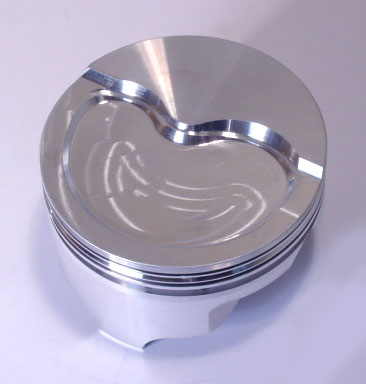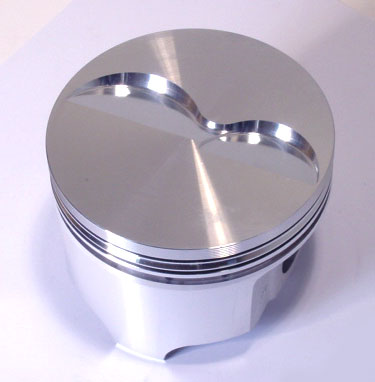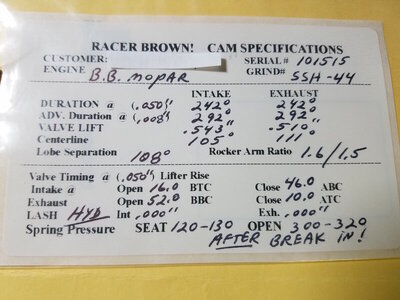I have a question for you engine guys. I am redoing my 69 Road Runner. Had a 451 put together 7 or 8 years ago using Source's kit with 4.380" -4 flat top pistons (measured compression 10.3:1). I had always struggled with a slight bit of detonation, but had it pretty much under control by backing the timing down to 31* from 35* (where it made the most power on the dyno) and slowing down the advance curve. Since the car is totally blown apart, I decided to have the motor taken apart for new bearings and gaskets, and try to lower the compression a bit.
Bought a set of Source's 4.382 -12 dished pistons and kept everything else in the motor the same. With these pistons, the CR measures 9.76:1.
My thinking is that I should be able to advance the timing to 35 and speed up the distributor advance. Also replaced the 750 Quick Fuel with a 850. In my mind, with these changes I wouldn't loose much for power and have the benefit of lower compression.
The new motor was on the dyno last week. The torque stayed the same at 543 ft. lbs. Horsepower was down from 544 to 529. So a loss of 15 there.
The big surprise and the reason for my question is that the motor made it's best numbers at 31* timing. We tried down to 28*, and up to 32, 33, 34, and 35.
How can this be when we are always told max power is at 35* on these motors?
Here are pics of the 2 pistons.


Bought a set of Source's 4.382 -12 dished pistons and kept everything else in the motor the same. With these pistons, the CR measures 9.76:1.
My thinking is that I should be able to advance the timing to 35 and speed up the distributor advance. Also replaced the 750 Quick Fuel with a 850. In my mind, with these changes I wouldn't loose much for power and have the benefit of lower compression.
The new motor was on the dyno last week. The torque stayed the same at 543 ft. lbs. Horsepower was down from 544 to 529. So a loss of 15 there.
The big surprise and the reason for my question is that the motor made it's best numbers at 31* timing. We tried down to 28*, and up to 32, 33, 34, and 35.
How can this be when we are always told max power is at 35* on these motors?
Here are pics of the 2 pistons.


Last edited:

















